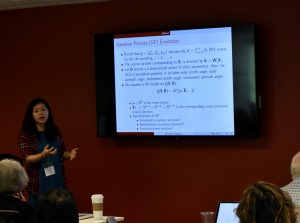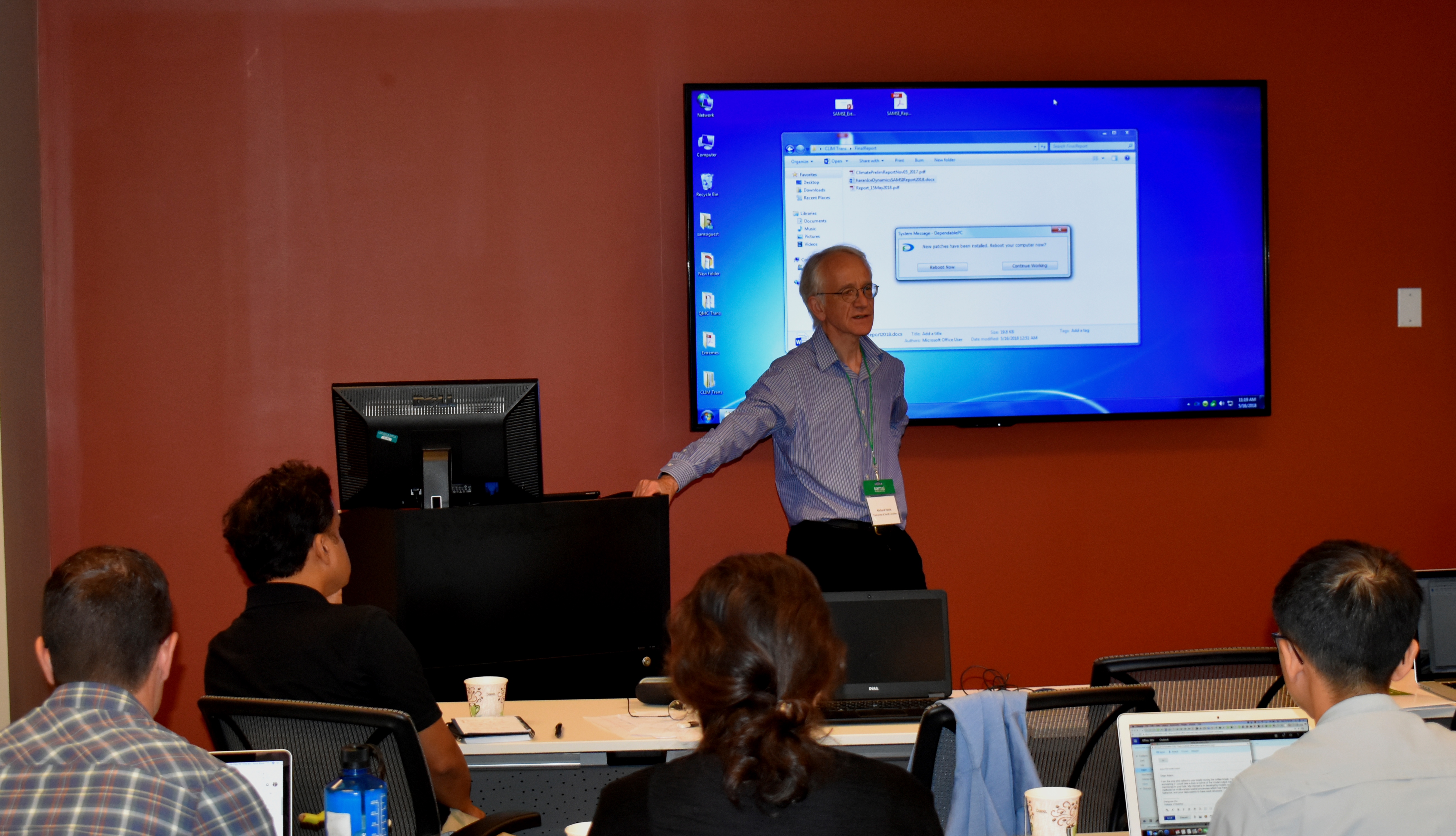
There is a proverb that states, “March comes in like a lion and out like a lamb.” It is a proverb that truly explains the extreme swings of the weather effects on our environment.
Much like this proverb, the Program on Mathematical and Statistical Methods for Climate and the Earth System (CLIM ) also came in like a lion and then transitioned quietly this May to complete another successful SAMSI year-long program.
The CLIM Program began in spectacular fashion with a solar eclipse, followed by the first of three devastating hurricanes to hit the United States in the summer of 2017 – and that was just the opening workshop!
During the academic year, the CLIM program hosted a distinguished atmospheric scientist from MIT, Kerry Emanuel. Widely regarded as the world’s leading hurricane expert, Emanuel gave a fascinating talk the future of hurricanes and how changes in our environment are causing these storms to become more and more intense.
In all, the program produced 13 working groups that addressed issues such as: remote sensing, data assimilation, analytics, climate prediction, environmental health and climate extremes, just to name a few.
A research course for graduate students was also hosted in the fall semester, called “Statistics for Climate Research.” The course was taught by seven different instructors who were part of the nearly 15 academic visitors for the CLIM program. Over 20 students registered for the course (plus several auditors in regular attendance) with students from departments such as Marine Sciences at UNC and Economics at NCSU, in addition to the local mathematics and statistics departments. The fall course was followed up by a spring course that covered statistical and computational methods for the analysis of data arising from climate research.
The program was a huge success and it attracted some of the most talented minds in environmental research today. The Transition Workshop met in May and each working group presented their findings to their peers that addressed their particular research topic.
Though the CLIM Program has transitioned, the research captured during the program is still ongoing and the environmental and applied math and statistical scientists will continue to collaborate for further study. To see an overview of the CLIM program, visit: /clim.
